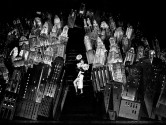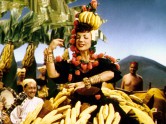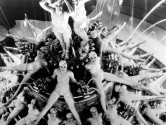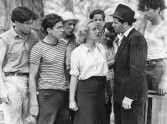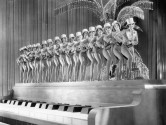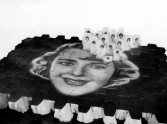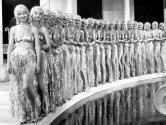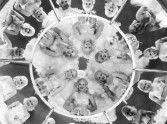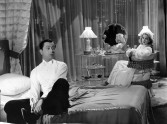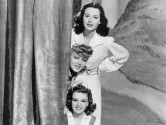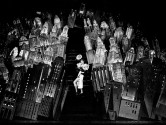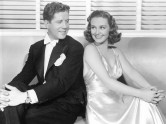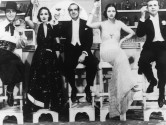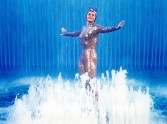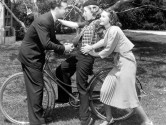
42nd Street
(35mm)
With Warner Baxter, Bebe Daniels, George Brent.
US, 1933, 35mm, black & white, 89 min.
Print source: Library of Congress
Lightly based on the much racier backstage potboiler by former vaudeville dancer Bradford Ropes, 42nd Street was intended to marry the dark, urban gangster picture with the spectacular, exhilarating musical—a genre that was waning after its initial explosion following the introduction of sound. The experiment proved groundbreaking for Berkeley, inaugurating his golden Warner Brothers streak of blank-check extravagance. Meant to be a tyrannical Florenz Ziegfeld character but also reminiscent of Berkeley himself, Warner Baxter plays stage director Julian Marsh with feverish, Depression-era desperation. Navigating gangsters, lecherous funders, broken limbs and all manner of schemes and affairs in order to realize his production, Marsh is unscrupulous in his dedication to the exciting, thankless stage. Given the chance-of-a-lifetime to save the show, neophyte Peggy Sawyer is portrayed by real-life hopeful Ruby Keeler, whose career was launched by this film. She and a galaxy of dancers synchronistically careen through the grand finale of suggestive Berkeley showstoppers, culminating in the phenomenal title number where space, scale and perspective constantly reconfigure and readapt to the syncopated visual rhythm of the city’s commonplace, violent, surreal, magnificent drama… only to return to Marsh’s anticlimactic reality as he listens to the catty comments of theatergoers as they exit.

